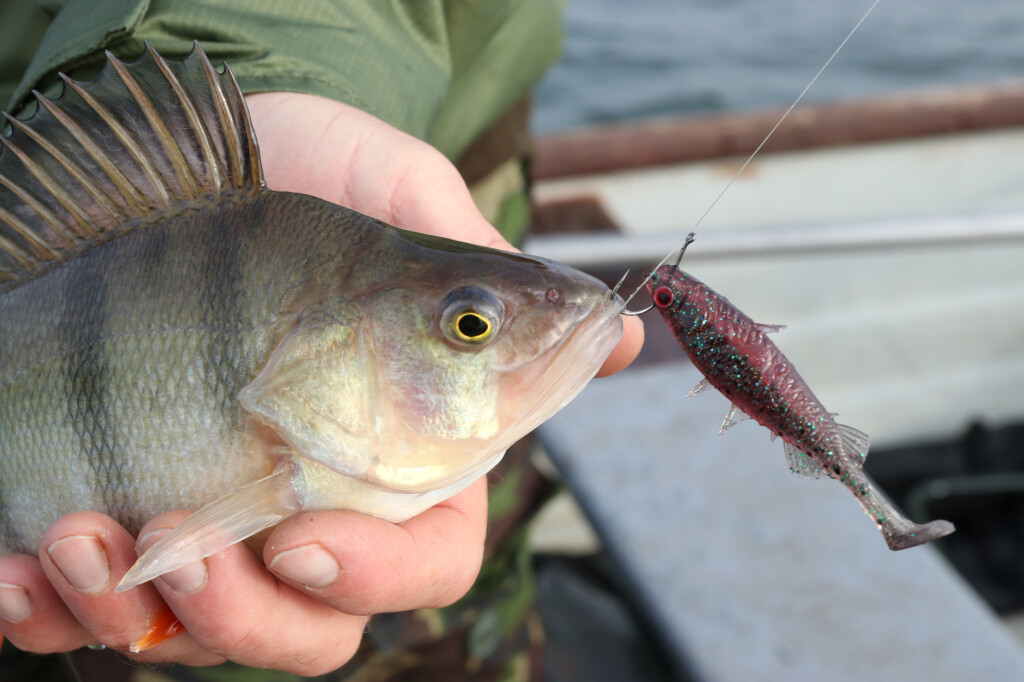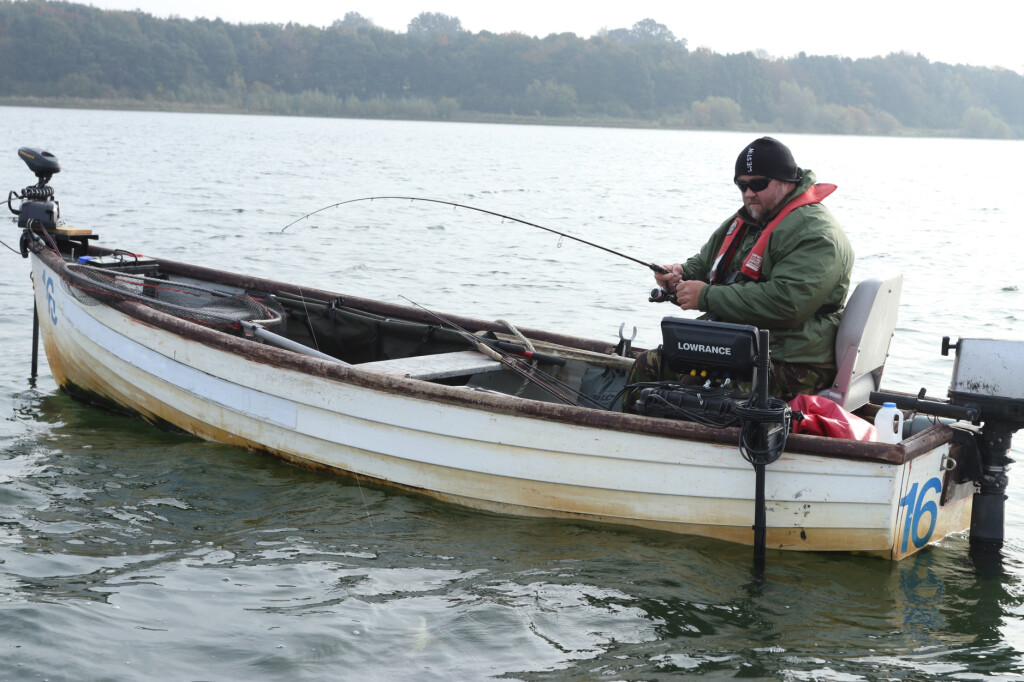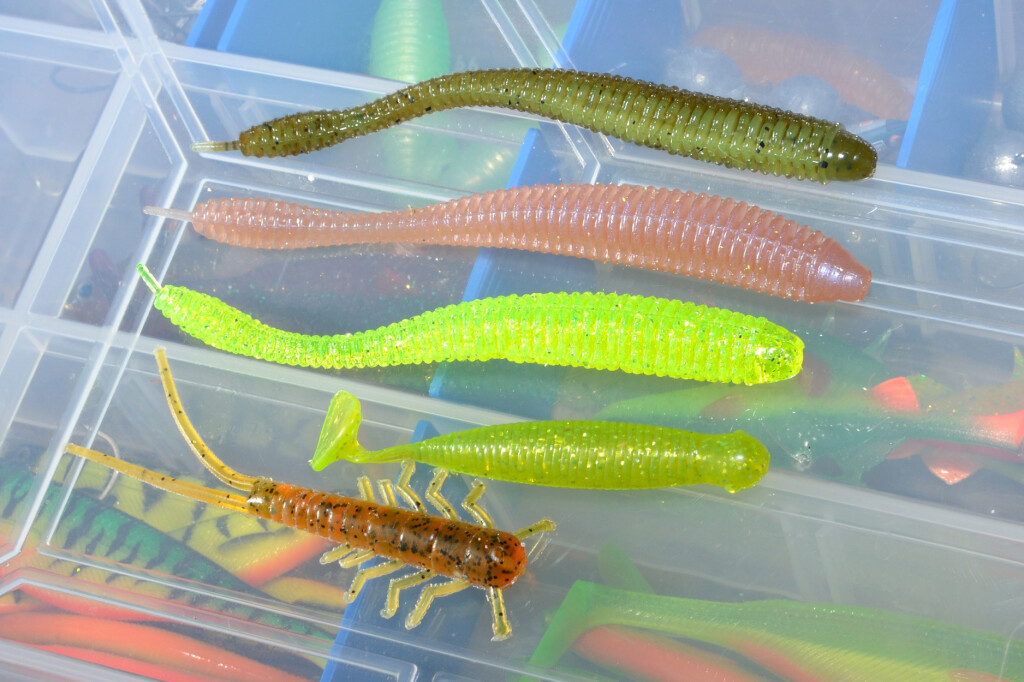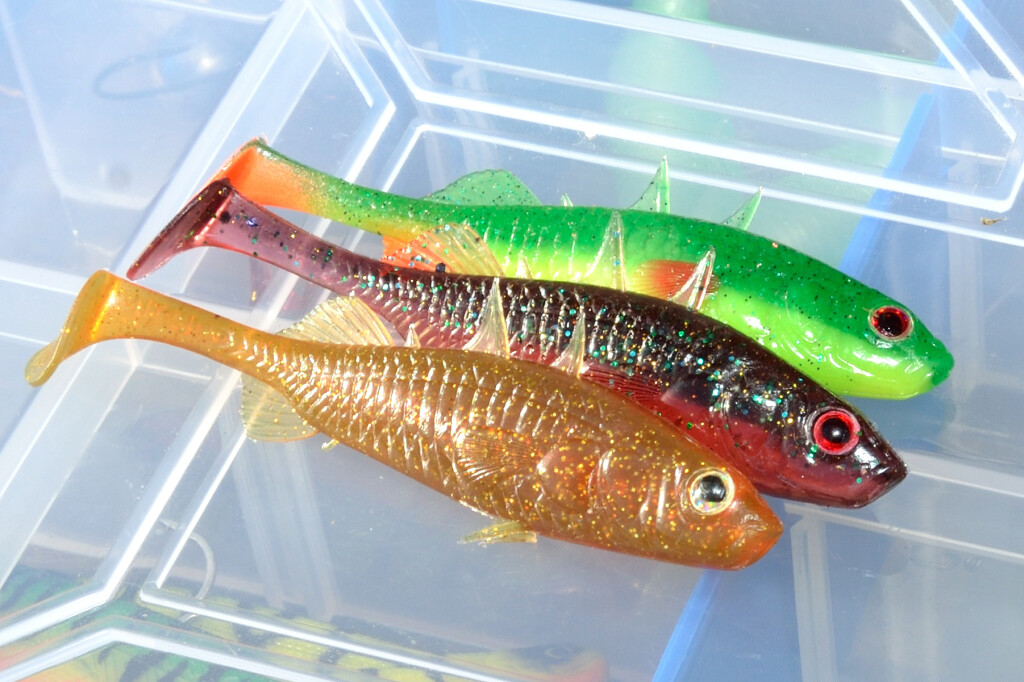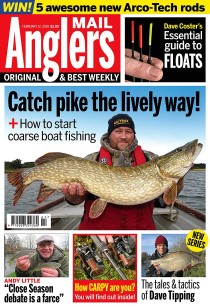Perch Time – Dropshot.
If you can get out, This time of year is a great time to target perch, they won’t be as easy to catch as in the early autumn, but your chances of that oversized fish are greatly increased as they generally pack on significant weight during this period, in the run up to spawning in late March early April, depending on water temperature.
Perch at this time of year form tight shoals usually around structures, or just off from bait fish, where they will do most of their feeding. Due to cooler water temperature any lures you use need to be worked slowly and usually close to the bottom, or close to where the perch are. For this reason the best method by far is to dropshot for them. Dropshotting is not a method for searching the water though as it is far too slow, so you need to be certain of the area you are fishing first.
I like to fish with quite a long drop from the lure to the weight, usually around 2ft.This might sound quite long especially if the perch are tight to the bottom. But realistically, it’s not that long in practice – as when you retrieve with a tight line the angle of the line is nearly always less than 45 degrees, which means the lure will fish on the retrieve about 1ft off the bottom, which is ideal. Fishing this distance from the bottom not only makes your lure stand out and casts a good silhouette for the perch to see, but it is also an easy distance for a hungry perch to rush up from the bottom to grab it. Additionally, it also means that when you let the line go slack there is plenty of “hang time” in the water as the lure flutters gently to the bottom. This is usually the time a perch will grab the lure.
Perch like to spend a lot of time looking at a dropshot while it is moving, sometimes following it for a long time, but as soon as it stops and starts to fall, it can be like a trigger for them to hit it, especially if there are a few of them following, which is also not uncommon. On hard-fished waters a good tactic is to leave the lure static on the bottom after this drop, it sounds silly, but I have had a couple of very big perch doing just this, it is almost as if they sit over the lure to see if it twitches again and if not they gulp it down and move off, this is signalled by the line tightening or the tip on the dropshot rod bending around.
The trick at this time of year is to put very subtle movements into the lure without moving it too much in the water column, or moving it out of the area where the perch are. Finesse fishing like this is very tricky to do, and it is not uncommon to move the lure too much, I find it easier to concentrate on not moving the lure rather than putting action into it. Water movement, wind on the line, boat movement will all impart the tiny subtle movements needed anyway so it’s easier to fish “dead sticking” anyway.
Perch can be funny at this time of year and feeding periods can be very spasmodic, so much so that you can often be certain of fishing over fish but not have a take for several hours, so it’s always worth sticking it out if you have found a shoal of fish, and going through various lures to try and trigger a bite. The key to feeding times is nearly always light-level related and this doesn’t necessarily mean early morning or late evening – both of which are great times for big perch, but it can also mean changes in light levels, and it can be simple things like when a cloud goes over the sun or when a shadow is cast by a tree or other object. Little things like this are the key to catching big perch.
Tips
Use the correct weight;
There are lots of different dropshot weights available, from pears to cylinders, a lot of people even use old jig heads with the hook cut off. They will all do the same job, but in certain situations different shapes will be more beneficial. If you are constantly moving and working your drop shot a cylinder-type weight is best, as it just gently rests on any bottom silt or debris and is less likely to sink in and get stuck. If you are fishing hard to a feature and want your drop shot to stay put as much as possible a pear or round drop shot weight is best, these are denser in the water and also aid hooking when fishing “slack”. Either way it is imperative that should the weight become snagged it can drop off – so don’t be tempted to tie them on.
Lures
There are loads of weird and wacky rubber things that you can put on as bait for your drop shot fishing, though they mainly come in two forms. Fish analogues or worm-esque shapes. I find that on some waters the perch do prefer one shape over another, however, for a really big perch the fish- shaped ones are by far the best.
Colours
If I could pick only one colour to catch any perch then it would be a chartreuse green. For some reason this is a “magnet” colour for perch, even baits with a “target spot” of this colour seem to work well. However, it’s a colour that “blows” quickly, and, certainly, big perch are quick to shy from it after being caught a few times. Far more constant colours are dark browns or dark reds, and these do tend to pick out the bigger fish, especially in fish-shaped lures.
